The Great Drought Myth
Here in East Anglia, we already have a hosepipe ban in force (I notice, by the way, that the farmers don't seem regulated by it: all around the Broadland region the irrigation hoses and bowsers are already on the land!)
The hosepipe ban doesn't affect me though... Why not? Well: because the garden is sodden, my two ponds are full to the brim and the continuous heavy rain (two weeks virtually non-stop by late April 2012) cleans my car every day!
So what's the story? Could this be linlked, perhaps, to the leaflet that dropped onto our mat inviting us to have our water supply metred? Hmmm.... This looks like an example of Icke-ian "problem, reaction, solution" to me. Dramatise the dangers of drought, fill the press with dire consequences and then impose draconian regulations, fines and stealth taxation.
Let's consider the REAL causes of the current 'emergency'. We need first to understand how water becomes available to plantlife and to us: I'm sorry if the following seems a little patronising to some, but, following forty years as an educator, I am under no illusions about the lack of basic scientific knowledge possessed by most of the population.
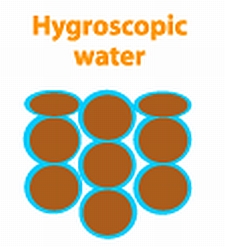 |
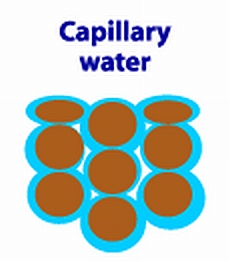 |
 |
When it rains on normal soils (as opposed to hard rock
or heavy clays) the water runs downwards between the soil particles until
it hits impervious bedrock. Then the water begins to fill up the gaps
between the soil particles, saturating the soil. The top of this saturated
level is called the water table. In an area with a thin soil, or an area
close to sea-level, the water table may be at - or even above - the land
surface. This is also the case where the underlying rock is totally impervious
(For example: granite regions like Bodmin Moor)
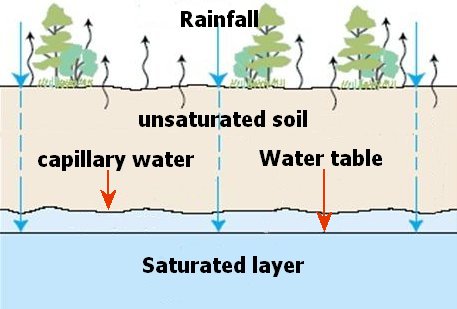 |
Via their root systems,
plants can make use of the water percolating downwards after rainfall,
water drawn up by capillary action, and by water bound to soil particles
by hygroscopic attraction.
Water from our taps generally comes from reservoirs, lakes and rivers
or from boreholes that penetrate below the water table.
A severe drought exists:
1) When the water table drops too far for plants to access it and when
there is insufficient rainfall for them to absorb water as it passes downwards.
2) When the water table drops below the level of reservoir beds, wells
and boreholes.
Neither of these currently obtain
in East Norfolk....
Furthermore, the situation is exacerbated by three factors:
1) Many East Anglian farmers (with the assistance
of the Drainage Boards) pump water from marshland into dykes, then into
rivers, then the sea. They do this to convert ten thousand year-old swamps
and grazing marshes into arable land, which they can leave fallow and
claim set-aside grants for!
2) The population of Norfolk has risen by 20% since 1980 (NCC figures) This means an extra 160,000 people who need to flush the toilet, take baths, boil the kettle, wash their clothes and crockery (Or even, God forbid, water the garden or wash their car!) Has there been a 20% increase in water supply capacity? Or infrastructure? New reservoirs? What do you think?
3) Many old and decrepit water pipes regularly fracture in bad weather or because of heavy traffic flow. A massive escape in the next village to ours flowed unchecked for over a week in January...
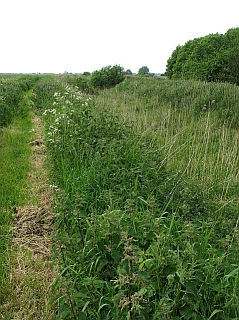 |
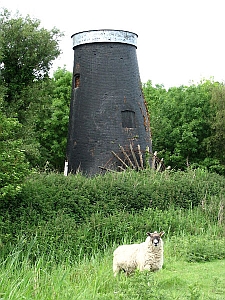 |
These are views of
Tunstall Dyke: you cross it just before the old Stracey Arms on the Acle
Straight. The wind pump once helped drain the marshes: the water scoop
can be seen in the photo. In the nineteenth century coal barges and wherries
sailed up and down the dyke from Tunstall to the Bure: in 1974 I caught
a 12lb pike a hundred metres from the A47 bridge. As can be seen, more
'effective' electric pumps have caused the dyke to disappear completely:
this has NOTHING to do with climate change or drought and EVERYTHING to
do with irresponsible drainage. The marshland around here once supported
huge winter flocks of geese and wild swans, while in the summer dozens
of species of wader and duck bred. Not now...


